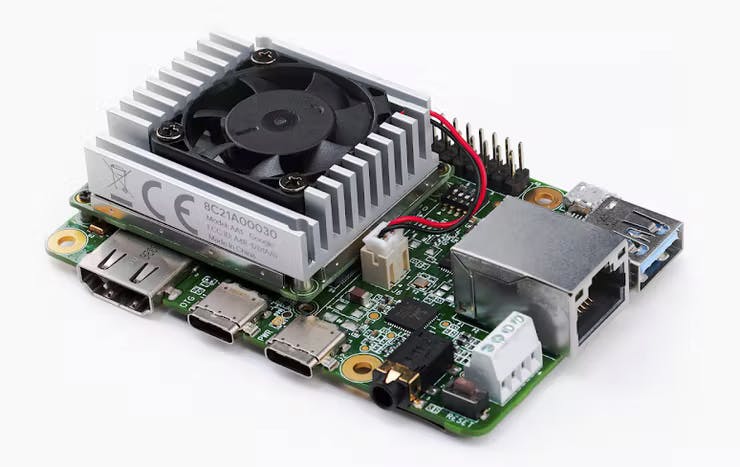
Google Unveils the Coral Dev Board Micro, Its First Microcontroller-Based TinyML Edge AI Board
from hackster.io
Google has unveiled another entry in its Coral family of low-power edge AI development boards, this time packing its Tensor Processing Unit (TPU) on a breadboard-friendly microcontroller alongside Arm Cortex-M4 and Cortex-M7 processors: the Coral Dev Board Micro.
Google unveiled its Coral range three years ago, launching a Raspberry Pi-like development board and a USB accelerator — both designed to showcase the low-power high-performance potential of its custom Tensor Processing Unit (TPU) accelerator technology. Last year the company added the Coral Dev Board Mini to the line-up, and now it's back with an even lower-cost device — and its first to focus on microcontroller-powered tinyML projects.
"The Coral Dev Board Micro is a microcontroller board with a built-in camera, microphone, and Coral Edge TPU, allowing you to quickly prototype and deploy low-power embedded systems with on-device ML inferencing," Google writes of its latest board. "By combining the Cortex M4 and M7 processors with the Coral Edge TPU on this board, you can design systems that gracefully cascade from extreme low-power ML inferencing to more complex — yet still power-efficient — ML inferencing."
The Coral Dev Board Micro centers around an NXP i.MX RT1176 system-on-chip, which includes a single Arm Cortex-M7 core and a single Arm Cortex-M4 core. Clock speeds have not yet been shared, but similar implementations clock the Cortex-M7 at up to 1GHz and the Cortex-M4 at up to 400MHz — putting them towards the upper end of the microcontroller performance leagues.
To this, Google has added an Edge TPU coprocessor offering four trillion operations per second (TOPS) of INT8 compute performance in a 2W power envelope — measured purely for the coprocessor and not including power taken by the i.MX or other components. There's 64MB of on-board RAM, plus 128MB of flash memory.
The board also includes a low-resolution 324×324 color camera sensor and a digital PDM microphone alongside two 12-pin general-purpose input/output (GPIO) headers at either side of the board — unpopulated by default, and aligned to be breadboard-compatible. For those who need more, the additional pins of the board are brought out to a pair of high-density 100-pin board-to-board connectors. Finally, there's are four LEDs and two buttons.Interestingly, but perhaps unsurprisingly given the company's positioning of the device as a microcontroller board for embedded projects, there's no network connectivity. A single USB Type-C connector provides power and data, while an optional Wi-Fi and Bluetooth module will be available as an add-on for those who need wireless connectivity. There will also be a carrier board, providing wired Ethernet connectivity as well as Power-over-Ethernet (PoE) support.
There are two aspects of the board Google isn't quite ready to share just yet, however: Pricing and availability. The company's official product listing simply states that the device is "coming soon" — meaning interested parties will need to wait before they can get their hands on the new device.




Leave a comment